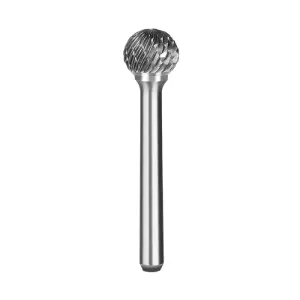When discussing how different cutting patterns affect the performance of Carbide Rotary Burs, it is essential to recognize that these tools are engineered for precision deburring, shaping, and material removal across metals, plastics, and composites. The cutting style directly influences efficiency, finish quality, chip evacuation, and overall control during operation. Machines and technicians rely on selecting the correct pattern because the interaction between tool geometry and workpiece characteristics determines productivity, tool life, and machining quality.

Single-cut rotary burrs feature flutes running in one consistent direction, typically generating long, curled chips. This pattern is designed for rapid stock removal and is widely used in applications involving hard materials such as carbon steel, cast iron, and hardened alloys. Their strong cutting force contributes to high efficiency when reducing large volumes of material. However, this aggressive cutting approach can produce a rougher surface finish and more vibration, requiring firm tool handling and stable machine support. Single-cut burrs are often chosen for heavy-duty beveling, deburring thick edges, and rough machining operations where speed is prioritized over surface finish refinement.
Double-cut burrs employ a crossing flute design that produces smaller chip particles and smoother cutting action. This structure reduces tool chatter, making it easier for operators to maintain control when working on delicate or thin surfaces. Because chip size is reduced, clogging becomes less likely, and heat generation remains lower compared to single-cut patterns. The resulting finish is significantly finer, making double-cut burrs ideal for finishing passes and tasks demanding precision and cleaner edges. Frequent users include moldmakers, automotive technicians, and aerospace machinists who need finer detailing along complex geometries.
Though named for aluminum applications, this cutting style is optimized for all softer metals and non-ferrous materials such as copper, brass, magnesium, and plastics. The flutes in aluminum-cut burrs are widely spaced with deep grooves, enabling chip clearance. This prevents the smearing and chip welding common when machining soft materials with standard patterns. Their tooth shape promotes fast, smooth removal while avoiding clogging, resulting in cleaner surfaces and longer tool life. This pattern is highly valued in industries that shape lightweight components because it reduces heat buildup and ensures smooth tool movement through softer substrates.
Beyond single, double, and aluminum cuts, specialty burr patterns such as diamond cut, chipbreaker cut, and spiral cut provide targeted performance enhancements. Diamond-cut patterns are often utilized for ultra-hard materials or precision grinding tasks, offering a good surface finish. Chipbreaker designs reduce chip length to improve control and decrease flying debris, while spiral patterns balance cutting aggressiveness and chip flow. The existence of these patterns demonstrates how tool manufacturers consider diverse industrial requirements, ensuring operators can match tools to technical demands.
The cutting pattern of a rotary burr significantly influences cutting feel, speed, accuracy, chip management, and final surface finish. Single-cut designs excel in rapid, aggressive removal, double-cut burrs achieve fine and controlled finishing, and aluminum-cut variants prevent clogging in softer materials. Specialty patterns further refine performance for unique applications. Selecting the appropriate pattern ensures suitable machining quality, longer tool life, and improved operator efficiency, making thoughtful tool choice a key factor in professional machining and metalworking environments.